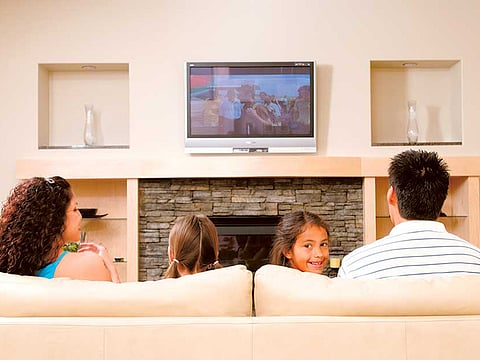TV viewing in for comeback as COVID-19 reshapes consumer choices
Brand owners and advertisers will need to immediately reset 2021 media budgets

Dubai: Is TV viewing ready to make a comeback? With COVID-19 shifting priorities, some of those old values and habits are primed for a return.
TV will thus “once again become the gathering point for shared social time” as “viewers reprioritise the importance of family relationships”, is how the marketing consultancy Kantar puts it in its forecasts for 2021.
That means all those single-screen viewing on mobiles and tablets could see some changes. Even as the number of video-on-demand platforms such as Netflix, Disney+ and HBO win over more subscribers.
Advertisers and their clients will thus have to make changes in the way they allocate their media spend for the year ahead. TV had been seeing declines, but if more viewers are making a return, those ad dollars too will do so.
Don’t go silent
But the one thing brands and their owners should not be doing is stay silent. Sure, market conditions are tough, revenues are in free fall and consumers wary of spending, but these are not valid reasons to spend less on advertising and promotions.
“When times get tough quite often a knee-jerk reaction from brands is to go silent, buckle down and wait for the crisis to pass,” said Manaswita Singh, the Dubai-based Head of Creative, Media and Analytics for Kantar’s Insights Division. “But data suggests that this approach tends to backfire, as brands that do go dark for long tend to lose momentum and see a decline in brand health.”
But it will take a while for marketers to shake off their “digital is all” mindset.
Chase the consumer
Through the bitter pandemic months, when homes became the focal point of everyone’s lives, online was the only channel that mattered. Kantar numbers show that in April, internet browsing was up by 64 per cent, online video by 54 per cent, and social media engagement up by 56 per cent.
All through this, consumers were having major worries related to their jobs and future. For many of them, those fears are still part of their minds and buying choices as the world gradually emerges from COVID-19.
According to Kantar data, around 50 per cent of consumers are less inclined to shop in-person this holiday season. Not surprisingly, 40 per cent are “more willing” to shop online.
But even online, there are clear shopper patters emerging. In the US, “63 per cent who visited Amazon in the days leading up to a purchase did so for initial product research,” the Kantar findings note. “Of those consulting Google on the purchase journey, 50 per cent were looking to discover new products and brands.”
Which makes trend spotting and identifying consumer behaviours much more difficult than what it used to be. “It’s all about the detail,” said Jane Ostler, Media Domain Leader for Kantar’s Insights Division. “Advertisers, media owners and agencies will need to forensically understand audience behaviours and attitudes in an environment in constant flux. They need to pay even closer attention to measurement and effectiveness than ever before.“
Reshaped by COVID-19
* Less loyalty – Subscribers will shift from one video-o-demand platform to another, pushing “streaming wars to a new level”. * Co-viewing is big right now rather than individuals being fixated on their own screens. * Brand investments in social media will continue to grow… “despite consumer distrust”. * Social media influencers will still have a say in brand promotions. * Measurement that “certifies creative content quality before airing will grow in importance”. * Digital ad spend to be “more dominant as the demise of the third-party cookies looms”. * Media data will be used and shared more systematically within organisations. * Activism enables brands to meaningfully connect with consumers, but actions will “speak much louder”. * Advertisers and agencies will accelerate their adoption of the latest media channels and formats. * In-home media consumption has increased during the pandemic, but questions remain over how long these habits will last and the challenge this poses for advertisers seeking to optimise their media buys. - Kantar
Sign up for the Daily Briefing
Get the latest news and updates straight to your inbox







